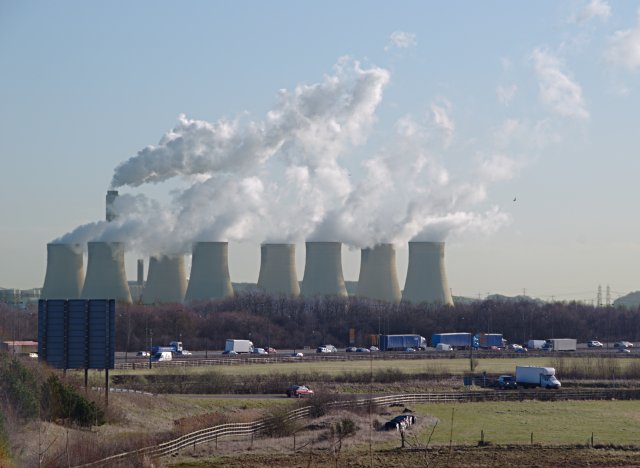
This week I have three distinct climate updates …
- The Past: One concerns something from the 1970s
- The Present: One is the Berkeley global review for 2022 – that is now available
- The Future: One looks ahead to what is most certainly coming in the near future.
Let’s take them one by one.
Oil giant ExxonMobile had very accurate predictions for climate change in 1970s
If you dig a bit into the history of our modern understanding of climate change then one name that will pop up is James Hansen. In the1980s he was the co-author of the first NASA Goddard Institute for Space Studies (GISS) global temperature analysis. This revealed the warming trend.
In 1988 he presented the findings to a senate hearing and made it very clear that he was 99% certain that the world was warming and that our greenhouse gases were responsible.
Was this really the first scientific insight into this?
Nope.
ExxonMobil had conducted internal studies into climate change back in the 1970s. These revealed what would happen. Their response was a constant stream of climate change denial.
Here is a Study into this: Assessing ExxonMobil’s climate change communications (1977–2014) …
Within that paper this is what they do …
We present an empirical document-by-document textual content analysis and comparison of 187 climate change communications from ExxonMobil, including peer-reviewed and non-peer-reviewed publications, internal company documents, and paid, editorial-style advertisements (‘advertorials’) in The New York Times.
This is what it reveals …
ExxonMobil contributed to advancing climate science—by way of its scientists’ academic publications—but promoted doubt about it in advertorials. Given this discrepancy, we conclude that ExxonMobil misled the public
Was their scientific analysis correct, did they really nail it back then?
Yes, they did indeed. Here is a comparison of what they predicted and what has so far actually happened …
ExxonMobil “knowingly misled” the public and governments. They had all this information at their disposal but they they looked the public in the eye and lied by publicly promoting denial.
Even now the ExxonMobil stance is this …
This issue has come up several times in recent years and, in each case, our answer is the same: those who talk about how “Exxon Knew” are wrong in their conclusions,
Unfortunately for them, the study that uses their own documentation reveals that even this stance is a lie.
Moving on from “What was” to “What is”, we have this next item of news.
Berkeley Global Temperature Report for 2022
The California-based non-profit research organization has completed their analysis for 2022 and published it. They have been doing this each year for almost a decade now.
What does the global 2022 report reveal?
- 2022 was slightly warmer that 2021 so that means it was nominally the fifth warmest year on Earth since 1850
- In context … the last eight years have included all eight of the warmest years observed in the instrumental record
Here is a graph of the data …
As you can see, while there is natural variability from year to year, the long-term trend remains consistent with an ongoing pattern of global warming.
One major contribution to that global variation from year to year is the El Niño and La Niña cycle. With the next El Niño we will most probably once again see a record breaking warm year.
They also note the following for 2022 …
- New national record high annual averages for 28 countries, including the UK, Spain, France, Germany, New Zealand, and China
- Record warmth in Western Europe, including the first ever 40 °C day in the United Kingdom
- Ongoing long-lived La Nina event, providing a extended period of slightly reduced temperatures
- March heatwave in Antarctica that produced the highest temperature excursion above normal ever measured anywhere on Earth
- Droughts affecting Europe, China, and US Southwest. Floods in Pakistan.
- Nominally the 7th warmest year on land and the 6th warmest year in the oceans.
Others have also independently been taking measurements and then crunching the data, so how do they all line up?
Like this …
You can find lots more of their details on it all here, including the raw data if you wish to crunch that yourself.
Moving on from “What is” to “What will probably be”, we have this next item of news.
Catastrophic 1.5°C of global warming is now considered highly likely within just a few years
Let’s start with this …
But …
That’s not the end game.
What comes next is scary stuff. A rather large chunk, 20-30% of the planet will shift into desert conditions as 2°C is approached by the 2030s/2040s/2050s. That will result in 2 billion people struggling against permanent drought.
For details of that, check out this paper – Keeping global warming within 1.5 °C constrains emergence of aridification
All doom and gloom …. but … and this really is the important key bit because that’s a really big “but” … we still do have choices.
This is not a prophecy, instead it is what is coming unless we change course.
If you are ever faced with a climate protester blocking the highway and you feel deeply pissed because you have been slightly inconvenienced, then please do pause and imagine how utterly “inconvenient” it would be if the above climate catastrophic outcome happens.
Lots of green wash around these days. I have stopped listening to many journalists who lie and say all is well.